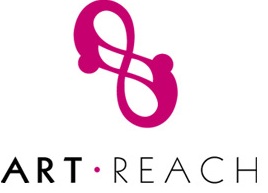| Social Services System: The social services system is a comprehensive enterprise level solution that focuses on operational and administrative management, inter and intra organizational workflows and client information tracking and reporting |
 |
The objective behind the system is to allow organizations to utilize the system to achieve operational efficiencies that allow organizations to focus on their primary business of service delivery to clients rather than be bogged down by manual processes and other administrative obligations. It allows organizations to profile the clients and track them throughout the system. Provides administrators and supervisors the ability to generate and interpret reports for program assessment, evaluation and planning purposes. It also provides the information necessary for applying for various types of grants.
 |
Community Development System: The CDC Database was created for Community Development Corporations that are responsible for the revitalization and rebuilding of their neighborhoods and communities. Our database gives the management of these organizations the tools and data resources that allow them to track and manage operations relating to the pursuit of their objectives. |
The design created by us addresses the data needs of the core areas of activities that are needed to revitalize the neighborhood, including a complete inventory of every parcel/property that is contained in the geographical areas covered by our customer.
We provide the screens and the data integration tools to capture all relevant information on every property that includes the condition of the property, the ownership, market value, taxes, zoning, liens, violations, photographs etc; We also track all development projects that are undertaken by the CDC, and provide integrated project and cost schedules across all projects at any given time.
Our application also contains modules for group activities such as community events, Voluntary Street cleaning events, workshops, resources distributed to community members and every other activity that is organized by the CDC. The system tracks all maintenance activities related to the upkeep of buildings and residences that are maintained by the CDC. All financial resources expended for the above activities are accounted for, and are categorized by the source of funding.
The system generates customized reports that display the objectives agreed upon with each funder and the progress of the CDC towards those objectives. Also included is a sophisticated GIS component that displays many of the reports on maps. It also integrates with publicly available information to gather and process all possible information relating to the area covered under the CDC.
| Training systems: The provider can create a curriculum of courses which are offered to clients. Courses and classes can be created, along with schedules of classes. Clients can be scheduled for classes and attendance can be recorded. |
 |
- Course/Classes-Creates courses and classes which are attached to the Course. For example, a Life Skills Course may have classes in Dressing, Grooming, and Interview Skills.
- Course Schedule-Creates Course Sessions, including Dates and Course hours. An example would be a GED program that starts each quarter and lasts for 4 weeks.
- Schedule Clients-Schedules clients for sessions. Client is given a printed copy of class dates and times.
- Attendance-Records client attendance at each class and produces a report showing daily attendance.
- Session Calendar: Displays the Course Sessions which have been scheduled
 |
Art Outreach System: The Art Outreach database was created for organizations that channel entertainment and other resources to disadvantaged persons.. This helps promote the arts among disadvantaged persons and assists in re-integrating some of the recipients into society. Donors of these subsidized services include Performing Theaters, Theaters, Museums, Private Performers, Music Groups, Art Instructors and other providers of Arts and Entertainment services and instruction. |
This application contains several features to allow these organizations to act as the intermediary between the donors of subsidized services and the organizations that provide services to disadvantaged clients.
The system contains:
- A fundraising module that records contributions from private donors in support of the organization’s activities.
- Screens to record all contributions of discounted tickets by several different theaters for shows and museum visits across the region
- Screens that track the sale of these tickets to all of the social service providers across the region.
- A volunteer module to capture the services of volunteers who assist in transporting and assisting people at events, and ensuring that they are safely seated and taken care off before, during and after the events.
The system then generates billing and manages the accounting with both the supplier of the tickets and the social service providers. All of these operations are encapsulated in sophisticated reporting that highlights the impact of the organizational services in promoting the arts to an underserved population.
| Grant Management System: The Grant Management System is a financial tracking database designed to track funding starting from the funding source to the final disbursement of funds. |
 |
There are several modules included in this system. Funding records funding received across all funding streams for each department. Revenue provides funding administrators with a global view of all funding and the schedule of revenue receipts across all funding sources. The Budgeting System tracks all budgets awarded to contracted service providers. Expenditures allow the user to Input the monthly or quarterly invoices from the service providers. Payments records payments to providers. The Budget History System tracks the budget amendment process. Reporting includes an extensive reporting capability for each module. This includes complex Custom Reports developed by CCI, an Ad Hoc report writer allowing the user to create reports, and Dashboards to display data from multiple areas of the application in one screen.
General Features: HMIS contains a number of features that are available to all areas of the system. These features are of two types, workflows and screens which are common to many processes.
 |
Workflow processes automate the forwarding of client files to various staff. These processes can be initiated manually by staff or automatically as specified by the provider.For manually generated flows, a forwarding screen is provided for the user. Automatic flows are pre-programmed and are generated when a specific action such as is initiated.The purpose of workflow is as follows: |
» Allows supervisorsto monitor the efficiency of the process and the number of presenting clients at each step of the process.
When a workflow is generated, a message is sent to a worker. The message appears in the worker’s inbox described below,and the client file is retrieved when the message is chosen.
| Inbox: The Inbox is part of the workflow process and has the following purposes: » Makes the transmission of paper files unnecessary. It allows computerized client files and messages about the file to be passed from one worker to another. » When a client is chosen from the Inbox, that client’s file is automatically retrieved and all case information is available for viewing or editing. |
 |
 |
Checklists: Checklists help to organize each staff’s workload and keep track of various actions such as Meetings with Clients and Completion of a Service Plan. The Checklist can be programmed to automatically show completion of screens in various parts of the system or to allow the user to manually check completion of a task.Different checklists can be created for each Job Role such as Intake Worker or Case Manager. |
| Activity Notes: The application has an extensive notes capability attached to each screen for the user to enter free form information as required. Notes from the different screens can be compiled and sorted so the user can view many notes in one report. |  |
 |
Document Imaging: Document imaging allows the provider to move toward a paperless system by allowing the user to scan documents such as public assistance cards and drivers licenses, and attach the scanned documents to the client file. The document can then be retrieved anywhere in the system. |
| Geographical Information System:A geographic information system produces data for capturing, managing, analyzing, and displaying all forms of geographically referenced information.GIS systems allow the user to view, understand, question, interpret, and visualize data in many ways that reveal relationships , patterns, and trends in the form of maps, reports, and charts. |
 |
 |
Computer Based Training: CBT is an audio visual program in which the student learns by following on screen instructions. It is especially effective for training people to use computer applications because the CBT program can be integrated with the applications so that students can practice using the application as they learn. |
| Reporting:The ability to retrieve reports which reflect data entered by users is a critical need for any provider. Reports can produce intelligent/actionable data so that the provider knows what is happening at every level of the organization. The reporting library can be designed to address the needs of every level of user in the continuum. |
 |
